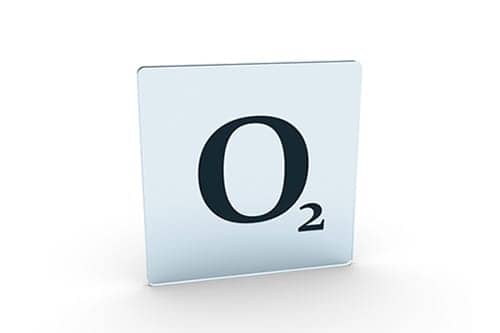Understanding the patient and the capabilities of the oxygen delivery device will make the difference in effective long-term oxygen therapy, with improved patient outcomes at a lower overall healthcare expense.
By Robert McCoy, RRT, FAARC
Long-term oxygen therapy (LTOT) in the home is the most effective option for treating chronic hypoxia. No other drug can prevent or correct hypoxemia as well as oxygen. The patient’s home is the least expensive environment for the delivery of oxygen and the preferred location by those receiving the therapy.
The drug, oxygen, has been shown to improve patient survival and reduce hospitalizations.1 Unfortunately, oxygen is a drug that is poorly prescribed, administered, and monitored in the home setting. No other drug is considered a commodity in the clinical community by defining it as a delivery device with a fixed setting for all applications.
These bold statements above have evolved from several decades of observations by this author regarding home oxygen therapy. Patients discharged from a hospital with the capability of living independently with supplemental oxygen are currently burdened with the task of receiving adequate oxygen therapy for all activity levels due to reimbursement cuts from payers. The constraint of reduced payment for effective therapy by payers and providers challenged to offer therapeutic equipment with these economic pressures creates the new norm for LTOT. Innovative oxygen therapy devices have evolved to address the constraint for cost effective oxygen delivery systems that meet the patient’s needs, yet focus on economics as opposed to therapeutics due to the new LTOT norm. A balance must be reached to provide LTOT as economically as possible, yet still meet patients requirements for effective oxygenation at all activity levels.
Continuous flow (CF) oxygen delivery is considered the standard of care for LTOT. The simplicity and low cost of CF has been accepted as therapeutic since the beginning of oxygen therapy, yet even CF has its limitations. A typical prescription of 2 LPM of oxygen for a patient breathing 12 breaths per minute will have a fixed volume of oxygen delivered in the patient’s inspiratory phase. If the patient increases their breath rate, as with exercise, to 24 breaths per minute, the inspiratory time will decrease and the volume of oxygen delivery with the fixed 2 LPM flow will decrease. This minute delivery of oxygen model would require the patient to adjust their oxygen setting (with a physician’s prescription) with each activity level that would change their breath rate. Typically patients are not titrated to their numerous activity levels and standard prescriptions usually are at a set flow rate.
Intermittent flow (IF) oxygen delivery was introduced several decades ago to allow for the efficient delivery of oxygen only when the patient was inhaling. The goal of IF devices was to reduce the waste of oxygen to allow a patient to use a portable oxygen system that was lighter and longer lasting. Unfortunately, IF devices were labeled “oxygen conserving devices” and manufacturers began to focus on oxygen saving ratio as opposed to therapeutic dosing levels for their IF regulators. An oxygen conserving device with a high savings ratio would make a cylinder last longer, yet may have a negative impact on the patient’s oxygenation levels. The cylinder might last longer than the patient’s ambulatory capabilities causing complications and comorbidities.
Intermittent flow devices deliver a pulse of oxygen at the beginning of inspiration and are cycled off by either a set inspiratory time or patient exhalation. A fixed pulse IF device has the ability of maintaining a constant FiO2 with changes in breath rate.
An IF device that adjusts the oxygen delivery (dose) based on a minute volume calculation will adjust the pulse volume based on respiratory rate and will simulate the delivery mechanics of continuous flow. All portable oxygen concentrators (POC) under 5 lbs in weight use a minute volume adjustment to their dose due to the fixed production of oxygen. Intermittent flow regulators have either a fixed pulse per breath or minute volume variable dose based on breath rate. It is important for the clinician to know the capabilities of the device they are prescribing and delivering to the patient. If the capabilities of the device are unknown, the clinician may think that a patient’s desaturation on a home oxygen system is due to the progression of the patient’s disease as opposed to the limitation of the delivery device.
Reference material is available for the description of an oxygen delivery device’s capability, yet may only provide the specifications provided by the manufacturer.2 These specifications will provide capabilities based on a fixed breath rate, tidal volume, and inspiratory time. Patient respiration will be very dynamic with different activities and the fixed reference from a manufacturer may only provide data for one patient activity. It is important to know a product’s capabilities at different breath rates, as that is the key to determining if a home oxygen delivery device has the capabilities to meet a patient’s needs with activity.3 If one device does not have the capabilities to meet a patient’s needs at all activity levels due to design specifications, another device may have the capabilities as it may have been engineered for different or greater capabilities. Again, ineffective oxygenation may be due to device not the disease in treating chronic hypoxemia.
Non-delivery systems have become the standard of care for home oxygen therapy due to reimbursement cuts for home oxygen. A non-delivery system is designed to require little or no routine service from the home care provider. A concentrator that has a cylinder refill system will give the patient the capability of filling their own cylinders and not require a durable medical equipment (DME) supplier to deliver full cylinders in exchange for empty. A POC that has the capabilities of meeting a patient’s stationary and portable oxygen need does not require a DME to provide refill services. The non-delivery model is effective if the oxygen delivery capabilities meets the patient’s needs at all activity levels. A home cylinder fill system may have issues with the availability of sufficient cylinders to meet the patient’s daily activities. Patients prefer small cylinders, yet with a limited number of cylinders and a refill time that could be over an hour may limit a patients ambulatory time and capabilities. The IF regulator selected for a portable cylinder used with a home filling system may conserve too much oxygen and limit the oxygenation capabilities of the patient. A post-valve system on a cylinder used with a home filling system can provide options for an alternative IF regulator if that is the limiting factor for oxygenation.
Portable oxygen concentrators have expanded and improved the use and application of LTOT in the home. Generating oxygen as opposed to packaging oxygen has eliminated the cost and inconvenience of compressed gas and liquid oxygen systems. A POC will run as long as necessary with an adequate power source. The key issues for a POC is oxygen production capabilities, weight and battery life. Patients prefer the lightest weight, longest lasting POC, yet their clinical needs may require a heavier unit with shorter battery life. Clinicians need to understand the capabilities and limitations of available POCs to advise and consult with the patient about their oxygenation needs and the consequences of using an oxygen system that does not oxygenate them with different activities.
Liquid oxygen (LOX) availability in the home has been reduced or eliminated from most DMEs’ inventory. The cost of the equipment and the need to refill a LOX base unit several times a month has an expense that is higher than the current CMS reimbursement for home oxygen. The perception by payers that oxygen is a commodity that does not require a specific delivery system has removed a very viable option for the therapeutic delivery of the drug oxygen. Liquid oxygen has the best weight to range capability of any stored oxygen system, which means the greatest amount of oxygen in a lightweight system is possible with a LOX portable. The Helios LOX portable started a trend towards greater patient compliance with oxygen therapy with improved ambulation. A 4 lb oxygen portable would last 6-8 hours and allow patients the freedom to be as active as desired. For patients requiring a high flow of oxygen with ambulation, a LOX high flow portable will last twice as long as a compressed gas E-size cylinder at half the weight, allowing greater ambulation for high flow oxygen users. If a patient’s oxygenation needs cannot be met with a compressed gas cylinder or POC, a LOX system should be available and reimbursed at a level that meets a DME expense.
Improved oxygen dosing devices that respond to the patient’s needs for oxygen adjustments with activity are becoming available. A patient at rest is relatively easy to oxygenate and usually is prescribed oxygen based on resting oxygen levels. With activity, O2 requirements change and the oxygen delivery devices historically stay constant. An exercise prescription is provided to some patients based on a short titration at the physician’s office. Activities of daily living are more challenging such as vacuuming, gardening, laundry and exercise, yet are rarely simulated in a clinical setting. Several options have evolved that try to address the patient’s change in activity with a responding dose change from the oxygen delivery system. One device responds to activity with a change in dose when the patient is moving. Another device monitors the patient’s respiratory rate and will increase the dose of oxygen with an increased breath rate and return to baseline with a reduced breath rate. Several articles have described an oximeter-controlled oxygen delivery system that monitors oxygen saturation and adjusts the does of oxygen base on the oximeter reading.4 These new devices recognize the need for a more dynamic response to a patient’s oxygen needs.
If oxygenation requirements of the patient are not met with the currently reimbursed systems, a patient may become sedentary and run the risk of an exacerbation with hospitalization. The recent trend towards reduced 30-day readmissions for COPD patients may necessitate an investigation to determine if the oxygen source, with possible limited oxygen supply, is the cause of readmission if other possibilities are not obvious. A hospital that is penalized for the readmission of a LTOT patient may need to become more involved in the understanding of the capabilities of home oxygen systems and direct or participate in the selection and application of a home oxygen system.
Oxygen is the key to life and for those with oxygenation impairment, the drug, oxygen, needs to be delivered therapeutically for all life activities. Oxygen delivery devices are merely the tools that are used to provide oxygen, yet are not the end point. Effective oxygenation at all activity levels is the goal of LTOT, which requires an understanding of the patient’s needs and devices capabilities. Patients are highly variable with dynamic changes occurring frequently even with the most stable patient. Oxygen delivery devices are typically static and require manual adjustments until auto adjusting becomes more feasible. The capabilities of oxygen delivery systems should be know by prescribing clinicians and those that provide education and set up of a patient in their home. The combination of understanding the patient and the capabilities of the oxygen delivery device will make the difference in effective LTOT with improved patient outcomes at a lower overall healthcare expense.
RT
Robert McCoy, RRT, FAARC, is managing director of Valley Inspired Products Inc, a research, testing and consulting company that focuses on home respiratory care products and services. For further information, contact [email protected].











You make a great point about how crucial it is to research the products capabilities. I wasn’t aware that it could be impacted by a patient’s breath rates. That’ a bit interesting.